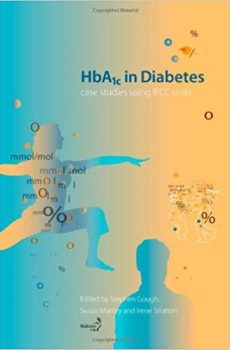
HbA1c in Diabetes: Case studies using IFCC units
3,430.00₹ 1,990.00₹
Adapting to the IFCC system of reporting HbA1c poses a challenge to generations of health professionals who have learnt the percentage system related to the major clinical trials, in type 1 and type 2 diabetes, the DCCT and UKPDS. This handy paperback illuminates the transition path.
Using real-life case studies to illustrate actual clinical situations, the book shows you how to use mmol/mol units in daily practice. Each case study shows the old percentage units alongside the IFCC units for quick comparison. Produced in association with Diabetes UK, this pocketbook helps you work with confidence in the IFCC system.
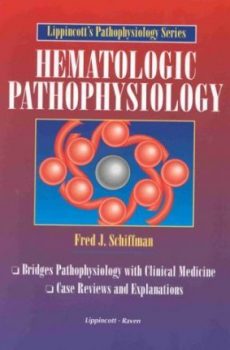
Hematologic Pathophysiology
2,290.00₹ 1,150.00₹
This volume enables students to master the science and clinical applications of hematologic pathophysiology and develop the problem-solving skills that are needed for exams and clinical rotations. The book provides a solid overview of hematology and applies scientific principles to actual clinical cases and problems. This unique “case-problem” format prepares students to link basic science to clinical medicine as emphasized in today’s exams.Using actual patient cases to illustrate hematologic principles, the book covers the life cycles, structures, and physiology of red and white blood cells and then discusses hemostasis, bone marrow disorders, and hematologic malignancies. Boxed case-problems challenge the student to apply key hematologic principles in a variety of clinical decisions. Numerous two-color drawings and schematics illustrate all essential concepts, and subheads, color highlights, and tables aid in comprehension and review.
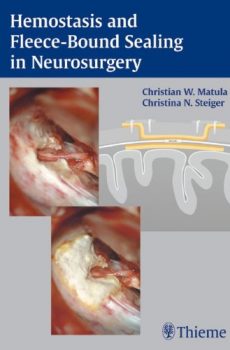
Hemostasis and Fleece-Bound Sealing in Neurosurgery
6,990.00₹ 4,390.00₹
Presentation of surgical treatment techniques of fleece-bounded tissue sealing – mostly intraoperative pictures – deliberate minimal use of radiological pictures. This compact text is intended to serve as an atlas or guide to using the above techniques. Results are presented briefly in tabular form.
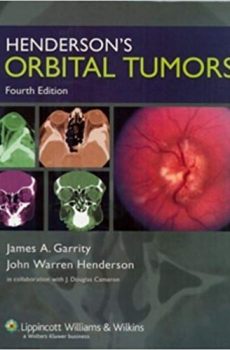
Henderson’s Orbital Tumors
18,430.00₹ 4,699.00₹
A complete update of a classic reference by specialists at the Mayo Clinic, Henderson’s Orbital Tumors, Fourth Edition collates the Clinic’s fifty years’ experience in managing tumors involving the orbit. Drawing on case reports and extensive follow-up data from over 1,700 patients treated at the Clinic, the authors formulate comprehensive guidelines on diagnosis and medical and surgical treatment of the entire spectrum of orbital tumors. This new edition reflects the latest advances in diagnosis and treatment, including improved imaging technology, more accurate pathologic diagnosis, new radiotherapy options, new surgical approaches, and therapy using monoclonal antibodies. More than 460 illustrations, 43 in full color, complement the text.
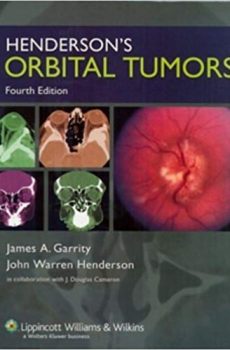
Henderson’s Orbital Tumors
17,990.00₹ 7,900.00₹
A complete update of a classic reference by specialists at the Mayo Clinic, Henderson’s Orbital Tumors, Fourth Edition collates the Clinic’s fifty years’ experience in managing tumors involving the orbit. Drawing on case reports and extensive follow-up data from over 1,700 patients treated at the Clinic, the authors formulate comprehensive guidelines on diagnosis and medical and surgical treatment of the entire spectrum of orbital tumors. This new edition reflects the latest advances in diagnosis and treatment, including improved imaging technology, more accurate pathologic diagnosis, new radiotherapy options, new surgical approaches, and therapy using monoclonal antibodies. More than 460 illustrations, 43 in full color, complement the text.
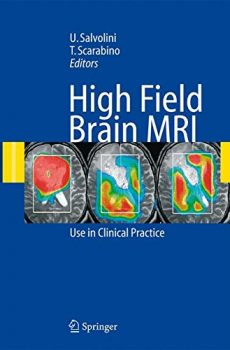
High Field Brain MRI
11,200.00₹ 6,300.00₹
This book describes the development of systems of magnetic resonance imaging using the higher magnetic field strength of 3 tesla, in comparison to the current gold standard of 1.5 tesla. These new systems of MRI make it possible to perform with high spatial, temporal and contrast resolution not only morphological examinations but also functional studies on spectroscopy, diffusion, perfusion, and cortical activation, thus helping research and providing an important tool for routine diagnostic activity. At the same time the new systems offer unparalleled sensitivity and specificity in the numerous conditions of neuroradiological interest.

HIGH RESOLUTION RADIOGRAPHICS OF THE HAND
9,600.00₹ 3,790.00₹
Plain radiography is still alive. In many institutions, including ours, conventional radiography has been replaced by digital systems including imaging-plate-based computed radiography and fat-panel detector-based digital radiography. Even for the education of radiation technologists, conventional flm-screen radiography has been de– phasized, and their education is concentrated on digital systems. Spatial resolution of a conventional system is still far better than the current digital systems, although the dynamic range is wider in the latter system. Industrial flm radiography with small grain size and direct exposure has an even higher resolution, and such hi- resolution systems are something we lost in the transition from the conventional system to the current PACS-friendly system. I am pleased to know that Giuseppe Guglielmi and Wilfred Peh have published this textbook of high-resolution hand radiographs that cannot be obtained with any other techniques. Radiography has always been the most important modality in the evaluation of the hand, and, moreover, high-resolution industrial flms are extremely efective in the evaluation of the hand, particularly for assessing subtle erosions. Hands are not just one of the peripheries of the human body. Tey refect conditions of the whole human body. Not only the metabolic status, but also many congenital disorders are manifested in the hand. Radiographic fndings of the hand are ofen specifc, and contribute to the diagnoses a great deal. Tere have been several publications concerning the radiology of the hand, and they have been well accepted.

Human Herpesviruses: Biology, Therapy, and Immunoprophylaxis
42,495.00₹ 16,990.00₹
This definitive and comprehensive account of the human herpes viruses provides an encyclopedic overview of their basic virology and clinical manifestations. This group of viruses includes human simplex type 1 and 2, Epstein Barr virus, cytomegalovirus and varicella-zoster virus. The diseases they cause are significant and often recurrent. Their prevalence in the developed world accounts for a major burden of disease, and as a result there is a great deal of research into the pathophysiology if infection and immunobiology. Another important area covered within this volume concerns antiviral therapy and the development of vaccines. All these aspects are covered in depth and the volume is fully up to date both scientifically and in terms of clinical guidelines for patient care. The text is generously illustrated throughout and fully referenced to the latest research and developments.

Human tissue in transplantation and research
3,290.00₹ 1,800.00₹
Deficiencies and shortfalls in the supply of human organs for transplantation and human tissue for research generate policy dilemmas across the world and have often given rise to major and deleterious controversies, such as those relating to organ and tissue retention practices following post-mortem examination. They also create an environment in which illegitimate commercial activities flourish. At the same time, patients are denied the therapy they desperately require and researchers are impeded from carrying out vital work into the causes of, and efficacious treatments for, major illnesses and diseases. David Price sets out a clear and integrated legal and policy framework which emanates from the tissue source but protects the interests of donors and relevant professionals through tailored property entitlements, but without presupposing rights to trade in ‘original’ materials.
- Outlines an integrated and coherent donation framework relating to human tissue for the purposes of transplantation and research, which will bring clarity to the policy debates and stimulate reform proposals
- Integrates a ‘property framework’ within the donation model, which will provide better protection for the interests of donors of tissue and professional users
- Weighs the interests of all the parties involved and feeds this in to a policy objective and an appropriate supporting infrastructure linked to consent
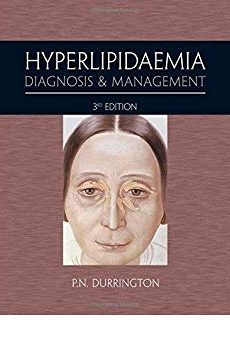
Hyperlipidaemia: Diagnosis & Management
9,588.00₹ 5,200.00₹
The third edition of this well-received text provides a state-of-the-art treatise on modern clinical practice relating to hyperlipidaemia and lipoprotein disorders, conditions responsible for a huge amount of morbidity and mortality in Western countries and, increasingly, the developing world. The clinical evidence underlying the treatment of hyperlipidaemia has burgeoned since the second edition published in 1994, with the publication of the results of several clinical trials on statin drugs, and the subsequent appearance of national and international guidelines for cholesterol lowering in coronary prevention. There has also been considerable development in the definition of cardiovascular risk, and the methodology for identifying high-risk patients.
All of these aspects are addressed fully in the new edition. In addition, the book offers helpful summaries of the background biochemistry of lipoprotein metabolism and atherosclerosis where relevant, putting the subject in the context of its pathophysiology and epidemiology. The text relating to clinical aspects has a strong evidence base, reviewing, in particular, areas of uncertainty and controversy.
Drawing on the wealth of experience of the author, and representing his widely respected views on the subject, readers will find this comprehensive, well-referenced and accessible book invaluable.
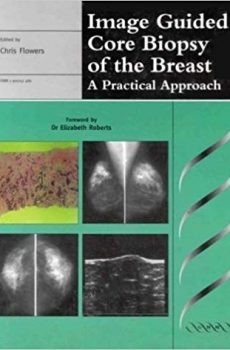
Image Guided Core Biopsy of the Breast: A Practical Approach
4,500.00₹ 1,990.00₹
Image Guided Core Biopsy of the Breast is the first book to truly reflect this multidisciplinary approach and to describe, in a practical and clinically relevant way, the principles and practices of core biopsy techniques. It shows this type of biopsy can be used to improve preoperative diagnostic rates in a cost-effective manner and, whilst discussing all currently used protocols in detail, it focuses on the simpler, “low-tech” lateral stereotactic needle guide.
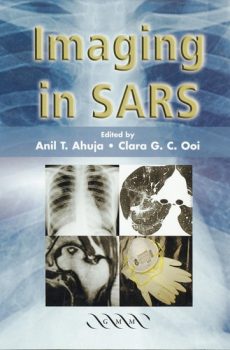
Imaging in SARS
8,370.00₹ 2,000.00₹
Severe acute respiratory syndrome (SARS) is a devastating disease and although the virus would appear to have been contained, it is clear that the impact it has had around the world, and could have again in the future, is immense. Hong Kong has been significantly impacted in the recent SARS outbreak, and clinicians and researchers alike have gained a lot of experience in dealing with the disease at short notice. This new book aims to be a state-of-the art update on SARS, with particular reference to imaging, which plays a crucial role in the diagnosis, management and follow-up of patients with the disease (it is widely accepted that SARS patients cannot be managed without imaging and it is included in the WHO’s own list of diagnostic criteria for the disease). The book will also provide a perspective on the treatment and experience of the disease outside Hong Kong.
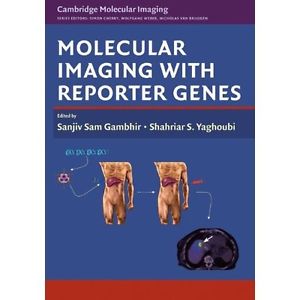
Imaging of Vertebral Trauma
6,930.00₹ 2,590.00₹
The imaging methods used to evaluate patients with suspected vertebral injuries have undergone radical changes in the past decade, the most significant being the ascendancy of computed tomography (CT) to become the primary investigative modality. Issues such as high radiation dose associated with CT studies and health care reform and cost containment also have a significant impact on clinical decision-making. This new edition of the classic landmark text for vertebral trauma imaging provides an in-depth discussion on the indications and methods of imaging the spine based on currently available clinical evidence. Every chapter has been extensively revised and the illustrations represent state-of-the-art imaging. A completely new chapter on pediatric injuries has been added. Imaging of Vertebral Trauma, third edition, is an invaluable and essential tool in the assessment of any patient with suspected vertebral or spinal cord injury.

Inflammatory bowel disease
7,990.00₹ 1,890.00₹
The study of inflammatory bowel disease is one of the most rapidly changing fields within gastroenterology. The revision of this successful title highlights the radical changes in therapy which are poised to affect clinical practice – particularly with the release of therapeutic agents (such as TNF antibodies). Clinicians’ Guide to Inflammatory Bowel Disease presents current knowledge in a compact and user-friendly format allowing physicians who treat gastrointestinal disease to take full advantage of up-to-date research information whilst emphasizing clinical guidance and therapeutics.
This second edition has been extensively revised and several chapters have been completely rewritten. The book follows the ‘Clinicians’ Guide’ format and is written in a digestible style with an attractive layout. In addition to rigorous revision of the text – the provision of new pictorial material and clinical algorithms will aid physicians’ knowledge. This revised version covers all the important aspects of inflammatory bowel disease whilst highlighting new developments in therapeutics and immunological manipulation.
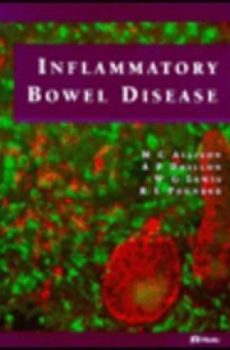
Inflammatory Bowel Disease
6,190.00₹ 3,000.00₹
This book offers gastroenterologists, surgeons, and general hospital doctors an immediate source of information regarding the epidemiology, genetics, immunology, etiology, and pathogenesis of inflammatory bowel disease. Focusing on the two most significant conditions, Crohn’s disease and ulcerative colitis, this book describes clinical signs, disease activity and progress, recurrence, complications and nutritional aspects. It discusses up-to-the-minute drugs, as well as medical and surgical treatment.
… Emphasizes differential diagnosis. … Includes hundreds of color illustrations to aid in recognition of signs and symptoms. … Devotes an entire chapter to the disease in childhood. … Discusses important clinical signs appearing in other areas of the body, including the mouth and skin. … Uses tables, figures, and diagrams to quickly present essential information.
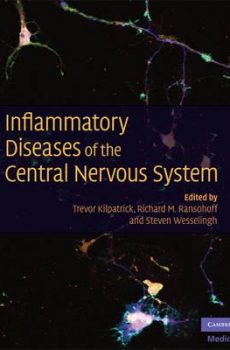
Inflammatory Diseases of the Central Nervous System
10,500.00₹ 4,700.00₹
Interactions between the immune and nervous systems are involved in many disease processes. Modulation of inflammation can provide an important opportunity to enhance regeneration within the central nervous system. This authoritative book defines the key cellular players in mounting an inflammatory response and highlights critical factors in the target organ that influence the nature of that response and its capacity either to damage or protect the brain. Several key clinical areas are highlighted – particularly autoimmune diseases of the nervous system including multiple sclerosis, as well as microbiological and traumatic challenges; the book therefore provides both a summary of the basic science background as well as practical, clinical-friendly guidelines to management. The book will be of interest to a wide range of physicians, including neurologists, neurosurgeons, neurorehabilitationists, infectious disease physicians, and clinical neuroscientists, as well as neuroscientists and immunologists.
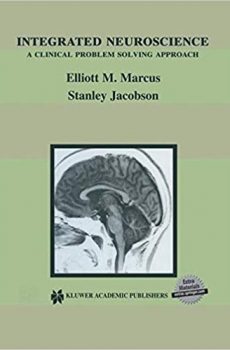
Integrated Neuroscience: A Clinical Problem Solving Approach
9,900.00₹ 4,690.00₹
This textbook takes as a premise that, in order to make intelligent diagnosis and provide a rational treatment in disorders of the nervous system, it is necessary to develop the capacity to answer the basic questions of clinical neurology:
(1) Where is the disease process located?
(2) What is the nature of the disease process?
The purpose of this textbook is to enable the medical student to acquire the basic information of the neurosciences and neurology and most importantly the ability to apply that information to the solution of clinical problems. The authors also suggest that hospital trips be a part of any Clinical Neurosciences Course so that the student can put into actual practice what he has learned in the classroom.
We believe that this textbook will be of value to the student throughout the four years of the medical school curriculum. Medical, psychiatry and neurology residents may also find this text of value as an introduction or review.
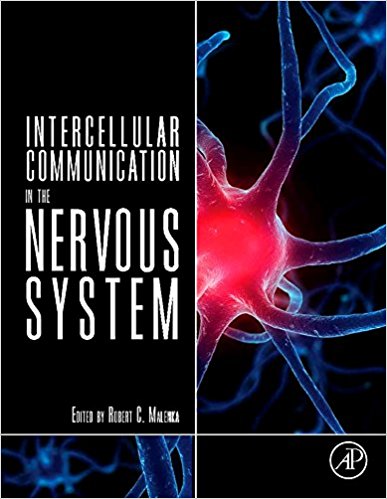
INTERCELLULAR COMMUNICATION IN THE NERVOUS SYSTEM – 1e
4,800.00₹ 4,500.00₹
Intercellular communication is part of a complex system of communication that governs basic cellular activities and coordinates cell actions. The ability of cells to perceive and correctly respond to their environment is the basis for growth and development, tissue repair, and immunity as well as normal tissue homeostasis. Errors in cellular information processing are responsible for diseases such as cancer, autoimmunity, diabetes, and neurological and psychiatric disorders. There is substantial drug development concentrating on this and intercellular communication is the basis of much of neuropharmacology. By understanding cell signalling, diseases may be treated effectively and, theoretically, artificial tissues may be yielded. Neurotransmitters/receptors, synaptic structure and organization, gap junctions, neurotrophic factors and neuropeptides are all explored in this volume, as are the ways in which signalling controls neuroendocrinology, neuroimmunology and neuropharmacology. Intercellular Communication in the Nervous System provides a valuable desk reference for all scientists who consider signalling.





















